Hot cities and cool wetlands
We’ve all been feeling warm recently and heatwaves are expected to be more intense and more frequent in the future as our climate warms.
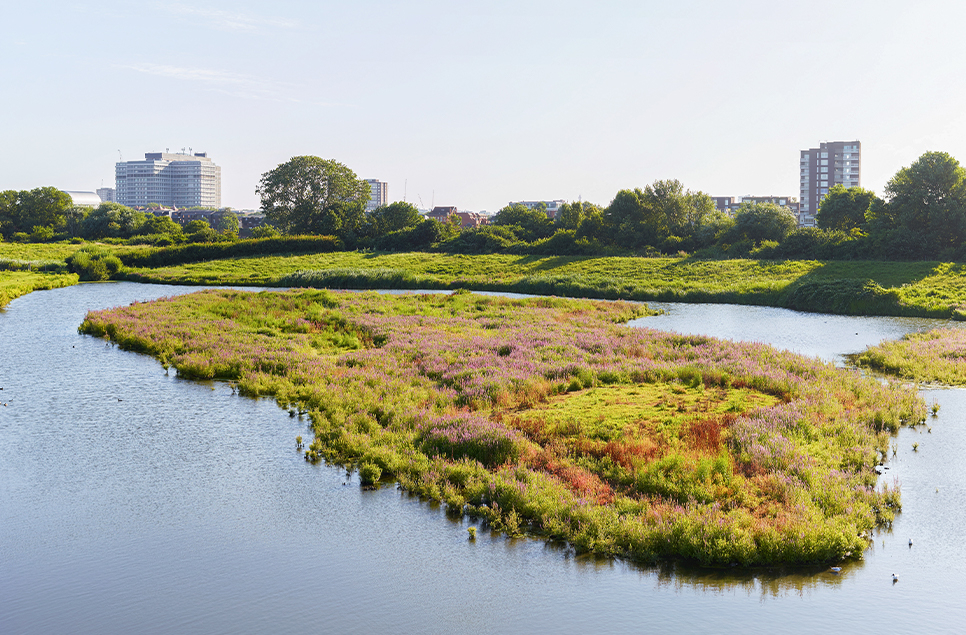
We’ve all been feeling the effects of temperature rises recently in the UK, and heatwaves are expected to be more intense and more frequent in the future as our climate warms. By adding wetlands to our cities, we can allow the heat to escape and really make a difference to climate change adaptation.
The cooling power of water
Humans are now officially an urban species with over half of us living in cities, but we haven’t always been this way. Many cities are built on or near wetlands as historically these were productive places for food and trade. Nowadays, there is more and more concrete, metal and tarmac used to create buildings and infrastructure. Man-made materials, often dark in colour, will soak up the heat during the day and keep those same areas warm at night. Many surfaces are also very bright and reflective, rapidly increasing surrounding air temperatures. This is known as the Urban Heat Island, or UHI, effect.
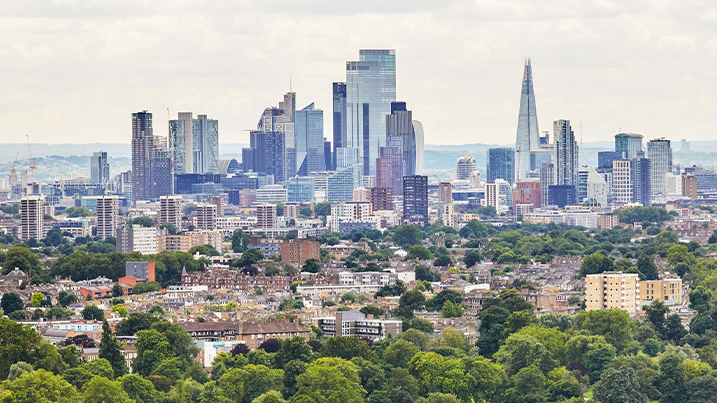
In a recent report, water has been highlighted as being essential in dealing with the heat in urban areas. Water has a high specific heat capacity, meaning that it can take on more and more heat (until it eventually evaporates) and so less heat needs to be absorbed by surrounding materials. In the case of flowing water, this means that warmer water from warmer air temperatures quickly flows away to outside the city.
Data show that there is a direct link between UHI effect and the amount of healthy wetlands in an urban area. In the Pearl River Delta metropolitan region in China, a study showed that a 10% increase in water body coverage lead to an 11.33% reduction of UHI effect intensity. In urban areas like Colombo in Sri Lanka, where temperatures can rise to forty degrees, it’s estimated the city’s wetlands can lower the temperature by 10 degrees, with this effect extending up to 100m away from the water.
Water is also highly reflective. This means that larger bodies of water, especially when the sun is at a low angle, will reflect solar radiation, whereas man-made materials continue to absorb it. These man-made materials take a long time to cool down. However, many urban rivers and wetlands, plentiful in the past, have been drained, built on, imprisoned in pipes and buried underground. Channelled and diverted, contaminated and polluted, they no longer provide us with a cooling service; in their current state, they pose problems; damaged wetlands are carbon emitters, piped streams are a flood risk. They need restoration and protection.
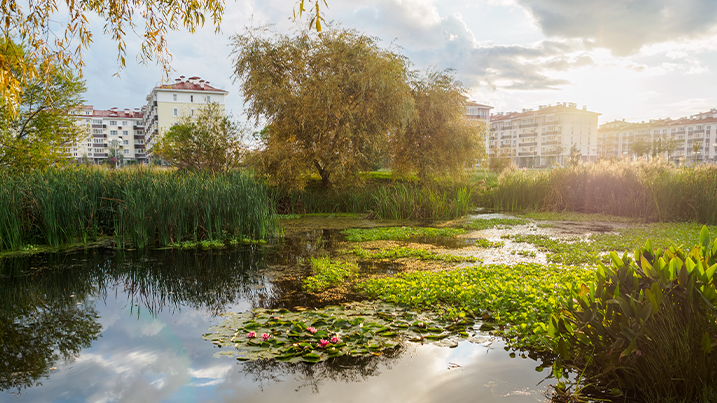
We have recently published an Urban Wetlands for Wellbeing route map calling on government, the private sector and communities to help create more urban wetlands to help level up access to wellbeing, including making people feel better by making our cities and neighbourhoods cooler. It details how nature-rich wetlands can be created in a range of urban settings at a variety of scales, allowing them to fit in any urban space, including:
Installing simple drainpipe wetlands like the one below in backyards and gardens.
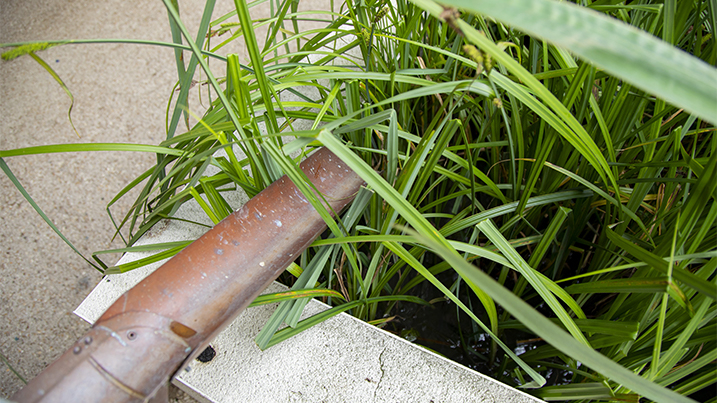
Building new rain gardens (see below) during street repair work and neighbourhood improvements.
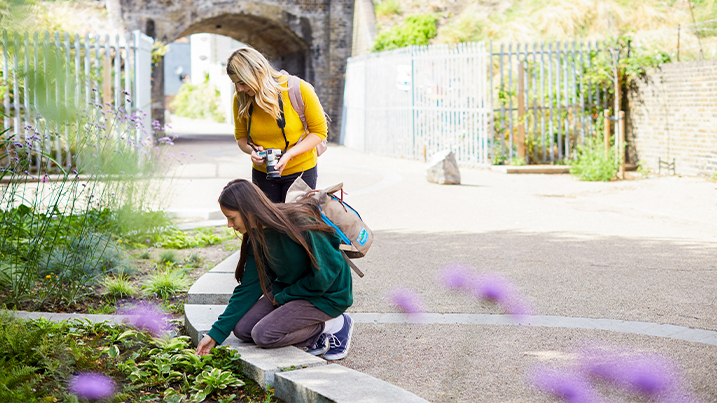
Creating parks centred on wetlands that provide a wellbeing resource for whole communities, such as Bridgwater Meads, Bridgewater (image below).
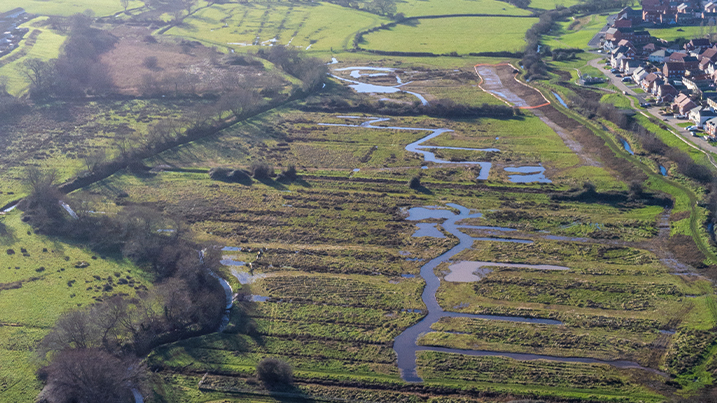
Restoring streams and rivers flowing through neighbourhoods, such as Salthill Park, Slough (image below).
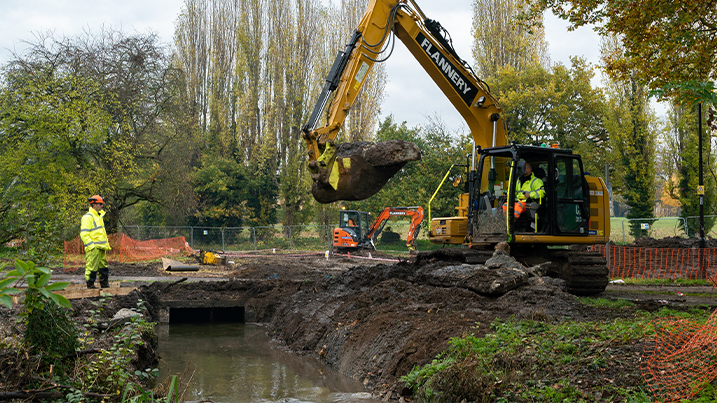
A variety of benefits
Climate change brings with it other factors that wetlands can help us with. In warmer air, more moisture can be carried and as global air temperatures rise, we’re seeing increased rainfall events. Wetlands can provide a buffer zone between people and flooding, providing a safe space for excess water storage. This wetland environment is also key habitat for many species and the climate crisis is intrinsically linked to the biodiversity crisis. Wetlands are the most biodiverse habitat on earth - supporting 40% of world's species while only covering 6% of world's surface - all life depends on water and healthy wetlands provide a space for life in our often nature-depleted world.
However, wetlands need enough water to give us all of these free benefits. A dried-up wetland increases flood risk and water shortages so keeping wetlands wet is therefore critical for all of us, including wildlife. Lower water levels mean increased water temperatures and lower oxygen levels. This is because there is less dissolved oxygen in warmer water than in colder water. In turn, this reduces the availability of food for birds that rely on fish and invertebrates thriving in the water. Climate experts predict that tropical wetlands are going to get hotter and drier; in the wetlands of Cambodia this means disaster for the people who secure their livelihoods from them and also for the Sarus crane. The main food source of these iconic birds is the water chestnut and there are concerns increased periods of drought and hotter, drier wet seasons may reduce its availability, making the cranes highly vulnerable to climate change. WWT is working hard to provide greater water security for people and wildlife in the region.
Aside from their cooling properties, urban wetlands are simply a joy to spend time in. Running water, swaying green reeds and an abundance of wildlife all help us to take a break from our day to day stresses. WWT research shows that just 10 minutes spent in urban wetlands can be enough to improve a person’s mood. Wetlands also have a social benefit, helping humans with their wellbeing. Spending time in a tranquil space provides us with an escape from the everyday stresses of urban life. Living in a city full of people can for some be an isolating experience; blue and green spaces provide a chance to meet your community, socialise and even exercise1.
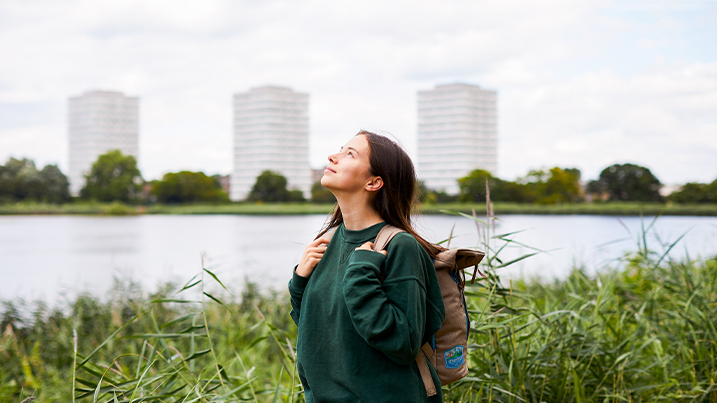
Healthy wetlands can help to cool cities, alleviate flooding and assist us in adapting to climate change. They can enhance biodiversity and our mental health too. If you would like to support us in our campaign to get more blue spaces into UK urban areas, please sign our Wetlands Can! pledge
Sign the pledgeHeader image: WWT London Wetland Centre
1 Reeves, J.P.; Knight, A.T.; Strong, E.A.; Heng, V.; Neale, C.; Cromie, R.; Vercammen, A. The application of wearable technology to quantify health and wellbeing co-benefits from urban wetlands. Front. Psychol. 2019, 10, doi:10.3389/fpsyg.2019.01840.



